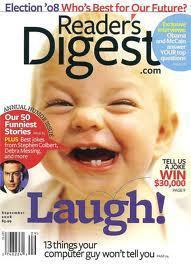Sam Horn's Blog, page 2
July 8, 2012
That’s Intriguing #87: Write in the Flush of the Moment to Free Up Flow
“You can become blind by seeing each day as a similar one. Each day is a different one, each day brings a miracle of its own. It’s just a matter of paying attention to this miracle.” – Paulo Coelho
In the beginning, clients often tell me they think writing is hard work.
I tell them, “Not if you write when you’re flush with ideas.”
Do you know how flush is defined?
“A rushing or overspreading flow.
A sudden rise of emotion or excitement.
Glowing freshness or vigor.”
Wow. What writer wouldn’t want that?
Writing is only a chore or a bore when you over-think it.
From now on, don’t write when you’re grinding; write when you’re glowing.
Writing is joyous when you’ve just observed or experienced something different, something intense – and you’re simply transferring the aha’s running through your mind onto paper.
The thing is, many of us are busy so we set aside a time to write. We sit down at the appointed hour and expect flow to show up, on command.
Flow doesn’t like to take orders.
It has a mind of its own.
It happens IN THE MOMENT.
It happens when we’re one with something that just happened and the miracle of it is filling our mind, soul and spirit.
That’s when we need to sit down and write.
When those exquisite moments happen, we need to GO WITH THAT FLOW or it disappears.
Next time, you see something, feel something, understand something as if for the first time … and your mind starts racing with epiphanies … honor them.
Sit down (even though you have ‘other things to do) and get those thoughts out of your head and onto the screen or notepad … as fast as you can.
Without editing or critiquing.
Let what wants to be said come out in a vigorous rush … because what’s coming out is alive.
It may not be grammatically perfect … but it will have a voice, a passion, a pithy purity that only results when we’re swept up in what wants to be said.
When we do that, when we get out of the way and facilitate what wants to be said along its way, we collaborate with the muse.
It may sound grandiose, but writing those thoughts down in the moment is a way to render them immortal.
When we are in that pure state of flow, we are simply the conduit for whatever insights are blossoming within us.
We are merely the messenger and our role is to get those thoughts out of our head (where they serve only us) and into the world (where they have the opportunity to serve many).
You know you’re getting this “right,” when you look at what you’ve written and it’s better than you know how.
So, if you want writing to be a blessing instead of a burden; if you want to be at your intriguing best, write in the FLUSH of the moment to free up FLOW.
They don’t call them fleeting thoughts for nothing.
Next time you experience something that gets your juices flowing, get going.
Actually, sit down and let what wants to be said …. get said.








June 30, 2012
That’s Intriguing #86: Sam Horn and the Intrigue Agency Open Nominations for the 2012 POP! Hall of Fame
 “The best way to corner a niche is to create a niche. And the best way to create a niche is to … coin your own word.” – Sam Horn
“The best way to corner a niche is to create a niche. And the best way to create a niche is to … coin your own word.” – Sam Horn
Encountered a couple of early entries for the 2012 POP! Hall of Fame … and thought I’d share them to kick-start your thinking about what newly-coined NURDS (New Words) you’d like to submit for this year’s contest.
Previous winners have included:
* Diabesity: Dr. Francine Kaufman’s term for the epidemic of Type 2 Diabetes that is triggered by obesity.
* Snuba: It’s half snorkel and half scuba … and it’s a new multi-million dollar industry.
* Freakonomincs: Are you going to run right out and buy the latest tome on economics? Probably not. But authors Dubner and Levy turned their concept into an international brand – movies, media appearances, blogs, 6-figure consulting contracts - by giving it a first-of-its-kind name that appealed to the masses.
* A.W. Shucks: What else would you call an oyster bar in Charleston, SC?
* Yappy Hour: The Holiday Inn in Alexandria, VA has received millions of dollars of free press due to its innovative Friday night “petworking” opportunities for dogs.
* YOUmanity: Aviva came up with the ideal name for their “chain of kindness” philantrhopy campaign
* Geek2Geek.com: Think Match.com for pocket protector types. As one personal ad proclaimed, “Tall, dork and handsome.”
* SerenDestiny®: Okay, I admit it, I’m partial to this one because it’s the title of my next book. And like Tongue Fu!®, I’ve been able to trademark SerenDestiny® which means it can be merchandised and monetized … in perpetuity.
* Java Jacket: You can’t build a business around an un-prounounceable name. So Jay Sorenson gave those “cardboard insulating sleeves” you put around your cup of coffee an easy-to-say-and-remember name.
* Revenew: Just met the founder of this start-up in NYC at the WOIS Summit. You’ve heard of Spell Check? This is a fantastic example of a POP! technique called Spell Chuck. Chuck the normal spelling of a word and come up with your own. Brilliant.
*Tiecoon: This shop in NYC’s Penn Station – which sells neckties to Wall Street financiers – stopped me in my tracks and motivated me to snap a photo. Which is the point. If it’d been named Jack’s ties, I would have walked on by and not even noticed it. Does your store name have people at hello?
Now, in case you’re thinking, “Okay, these are clever names. Big whoop.”
Please understand … NURDS aren’t petty; they’re profitable.
This is not wordplay…this is wordcash.
ALL of these names have helped their products, businesses or services STAND OUT and get noticed, remembered … and rich.
Several of these names have generated millions in revenue for their owners.
In fact, as Jay Sorenson, originator of Java Jackets says, “Customers who meant to call my competitors actually end up calling me …because they can’t remember my competitors’ names.”
So, what first-of-its-kind business, book, product, store names have you seen this year? What intriguing NURD popped out and got your attention?
Submit your entry by email to Sam@IntrigueAgency.com for the 2012 POP! Hall of Fame contest … and send a photo if you’d like.
We’ll post the best NURDS 0n our blog and on our Facebook page.
Winning entries who make the final Top 10 Winners in the 2012 POP! Hall of Fame get a free copy of POP! … or your choice of any of our books.








June 17, 2012
That’s Intriguing #85: Are you Surrounding Yourself with People Who’ve Got Your Back … and Your Front?
 “Individuality is fine. As long as we do it together.” – Frank Burns, M*A*S*H
“Individuality is fine. As long as we do it together.” – Frank Burns, M*A*S*H
I had the privilege of living in Hawaii for 17 years.
As much as I loved living in Paradise, I didn’t realize how professionally isolating it was until I moved to the Mainland – the Wash DC area.
A colleague Rebecca Morgan, (co-founder of SpeakerNetNews.com) and I roomed together at a convention that year. We stayed up late every night debriefing what we’d learned and swapping best-practice tips.
We decided to continue this rewarding collaboration by inviting 5 carefully selected peers to join us in monthly phone calls and twice-a-year in-person meetings.
At our first meeting, we were “going around the table” updating each other on our priority projects and pinpointing where and how we could use help.
When it was my turn, I said, “I’m thoroughly enjoying this and I’m glad to be part of it. I just can’t think of anything I need help with, so I’ll donate my time back to the group.”
It was quiet for a moment. Then Rebecca (bless her heart) said, “Well, what are you working on right now?”
“I’m re-doing my website.”
“We can help you with that, “Rebecca said confidently.
And she was right. A half hour later, my website was infinitely better because of the group’s suggestions.
My subsequent epiphany was, “It had been so long since I had asked for help, I had forgotten how.”
Since there hadn’t been any other professional speakers on Maui at that time, I didn’t have anyone to “talk shop” with.
The few times I did share my business activities with acquaintances, they simply didn’t have the industry knowledge to be able to give informed advice.
So, I stopped asking. I ended up doing everything myself. And that worked pretty well. As the saying goes, it was what it was.
Six Heads are Better Than One
“It isn’t melodramatic to say your destiny hangs upon the impression you make.” – Barbara Walters
But, after that first experience with the Master Mind group, I realized it isn’t melodramatic to say our success hangs upon the mutually-rewarding strategic relationships we make.
For example, I was discussing an online info-product I was developing and Val asked, “Why are you only offering one pricing option? Why not bundle your CD’s together and offer three different packages so people can buy at their own comfort level?”
Uh, duh. Why wasn’t I doing that? Because it had never occurred to me.
That’s just one of the many advantages gained from having a variety of people bring their objectivity and combined expertise to the table (so to speak.)
As entrepreneurs, we often get so close to our work; we can’t see it clearly anymore.
That’s one of the many advantages of being part of a strategic master-mind.
Peers can often pinpoint our blind-spots and tell exactly what we need to do differently to break through an impasse.
Group brainstorming not only saves us a lot of trial-and-terror learning; it’s the quickest way to dramatically improve and expedite results.
Are You Trying to Go It Alone ?
“Remember, we’re all in this … alone.” – Lily Tomlin
Are you preparing an important communication … all on your own? Are you writing a book, developing a presentation or polishing a pitch?
Maybe you don’t know anyone who has experience with what you’re pursuing.
Or, you live in an isolated area and you’re going it alone because there doesn’t seem to be any alternative.
Or, somewhere along the way you were taught not to “bother” people by asking for their help, so your default is to be self-sufficient rather than seeking support?
If there’s anything I’ve learned in the past 20 years of helping people create more compelling communications; it’s that strategically aligning with colleagues how have our band AND our front is a non-negotiable for fast-forwarding our success.
The good news is, we don’t have to be an individual struggling to figure everything out on our own. We can go it alone … together.
How? Just follow the model for the Quaker Square Hotel in Akron, Ohio.
What’s this about the Quaker Hotel? Quaker Oats executives were planning to demolish several unused grain silos standing next to each other.
Fortunately, one exec asked, “Why tear the silos down? Why not take out the inner walls, connect them and turn them into a one-of-a-kind, historically relevant hotel?”
Voila. The stunning result is a model of how we can take out inner walls and connect with others, side by side, so we have the best of BOTH worlds by going solo and by going silo.
Form Your Own Strategic Master-Mind
A reporter asked Bette Midler, “What’s the hardest part of success?” She said, “Finding someone who is genuinely happy for you.”
Forming your own strategic master-mind is a way to surround yourself with people who support you and stand behind you. People who facilitate your success and have your back.
Forming your own strategic master-mind s is a way to surround yourself with people who stretch you and show you the way. People who fast-forward your success and have your front.
Best of all, forming your own strategic master-mind is a way to align with people who have your best interests at heart.
I was motivated to write this post because I’m preparing for our Strategic Retreat – our halfway 2012 Review – Preview – next weekend. There’s still a couple spots left.
http://samhornretreat.eventbrite.com/
If you can’t join us, plan on organizing your own mini review-preview with an eclectic group of colleagues from different industries and professions.
Divvy up the time so everyone has an opportunity to share highlights and lessons-learned – and an opportunity to brainstorm/strategize a priority project and ASK everyone for input on how they can accelerate and achieve better results for the second half of the year.
It will be “rising tide raising all boats” gathering that benefits all involved.
Everyone will be genuinely happy for your success … because they helped create it.








May 20, 2012
That’s Intriguing #84: An Innovative Way to Turn InfoBesity into Intrigue

“In influencing others; example is not the main thing. It’s the only thing.” – Albert Schweitzer
Agreed.
What’s a situation coming up in which you want to influence someone to give you their time, mind or dime?
If you want to capture and keep their attention – if you want to open their mind and change their mind – don’t open with information.
Open with an example.
In fact, follow Dr. Brene’ Brown’s shining example …
I had the privilege of meeting Dr. Brene’ Brown at a recent Leadership Colloquium at NASA Goddard.
Brene’s TED talk on The Power of Vulnerability is one of the top ten most-downloaded TED videos.
http://www.ted.com/talks/brene_brown_...
After the first 10 minutes of her NASA presentation, it’s easy to understand why.
She’s disarmingly honest about her journey from being a left-brained researcher who only valued bottom-line facts to discovering the transcendent, whole-hearted, free-flowing love that comes from having children.
What she didn’t anticipate was the fear that comes from being a mom.
She described how she used to stand in her kids’ rooms at night and watch them sleep … and weep.
Why?
She cherished them so much, she was afraid something would happen to them.
She knew this was illogical. They were perfectly healthy, perfectly fine. Yet there she was … miserable.
She started researching why the emotion of happiness seems to be irrevocably tied with fear – and used an EXAMPLE to open our eyes to how common this phenomenon is.
A family is driving to their grandparents’s house for Christmas. The parents are uptight because they’re running late.
The kids, sitting in the back seat, start singing Jingle Bells .
The parents realize how ridiculous they’re being and start singing Jingle Bells along with them.
At this point, Brene’ asked the audience, “And then what happened?”
Guess what the majority said??
“They get in a car accident.”
Is that what you thought?
Do you know what that means?
It means, deep down, you believe happiness is fleeting – you believe it is too good to be true.
How about you? In the midst of things going well, are you, at some level, waiting for the other shoe to drop?
Arrgghh.
Say it ain’t so.
Brene’ went on to explain that, in an effort to protect ourselves against the pain we feel when something goes wrong … we prepare ourselves by projecting it so we won’t be blindsided when the heartache happens.
Not only does that cut short any joy we might be feeling, that “failure forecasting” increases the likelihood of something going wrong because that’s what we’re focused on. Then, if something does go wrong, it reinforces our worst fears and proves us “right.” This sets up an emotionally unhealthy spiral where we have even more cause to worry.
Brene’ continued with constructive ways to change this destructive default … if we choose.
Okay, what’s the point?
Look back over this post.
Were you engaged? Were you thinking about that insight that some people are afraid of happiness – and thinking how it relates to you?
That’s because Brene’s EXAMPLE pulled you in and helped you SEE this situation.
If Brene (or I) had just talked about how some of us are waiting for the other shoe to drop – even when things are going well - that would have been wah-wah rhetoric. You may not have related to it because it was information.
People today are suffering from InfoBesity. They don’t want more information.
They can get all the information they want – anytime they want – online for the click of a button.
People want to be intrigued.
And one of the best ways to intrigue people is with EXAMPLES – not information.
Back to your upcoming situation where you’ll be trying to persuade someone to give you their valuable time, attention, respect, business, account or funding.
Don’t start with information. Start with a real-life example that helps them SEE what you’re saying so they’re experiencing it – not just hearing it.
Want more ways to use intriguing examples to open doors and close deals?
My program on Win Buy-In: Get Anyone Intrigued in Anything … in 60 Seconds has received raves from consulting clients and organizations ranging from EO to Cisco who credit it with showing them how to create compelling communications that increased their influence, impact and income.
You can buy the MP3 here – and be benefitting from these innovative techniques on ”How to Turn InfoBesity into Intrigue” in minutes – http://www.samhorn.com/shop/
Or, you’re welcome to check out my public speaking calendar. I’ll be in Chicago, Los Angeles, Orlando, Seattle, Austin, Washington DC, Indianapolis, Nebraska and NYC in the next few months. Hope to see you at one of my programs – or contact us to coordinate a private consultation or training for your team while I’m in your area. http://www.samhorn.com/speaking/calendar/
And be sure to check out Dr. Brene Brown’s website and blog. Her insights on how we can be wholehearted – instead of going through life half-hearted because we’re protecting ourselves from pain – are brilliant. http://www.brenebrown.com/








April 29, 2012
That’s Intriguing #83: Why Does Readers Digest Pass Sam Horn’s Eyebrow Test®?
 I rediscovered an old friend today.
I rediscovered an old friend today.
Reader’s Digest.
I’m visiting my sister and brother-in-law this weekend – Cheri and Joe Grimm – who have been running my business and website for the past 15 years.
They gifted me with a stay in a delightful bed and breakfast here in Los Osos, CA (on the coast 40 miles south of Hearst Castle).
I noticed a copy of Reader’s Digest on my night table, and impulsively took it with me this morning to read while enjoying my coffee and a fabulous view overlooking the bay.
After the first few pages, fond memories came flooding back.
I was first introduced to Reader’s Digest when my family and I would go to our Granny’s house in Eagle Rock, CA for Easter, Thanksgiving and Christmas holidays.
If the weather was good, my sister, brother and cousins and I would play outside.
If the weather was bad, we were “banished” to the back porch.
And there, on the bookshelves, were stacks and stacks of Reader’s Digest. On some particularly rainy weekends, we would work our way through years of issues.
I was once asked by a reporter where I got my “literary training.” Did I study journalism in college, have an English degree or a Ph.D. in Communication?
No, no and no.
My teachers were Walter Farley (The Black Stallion series), Nancy Drew and Ed McBain (our librarian was a bit scandalized when this 12 year old kid checked out the racy 86th Precinct books from our small town, one-room library).
After delving into the May 2012 issue of RD, laughing out loud at pithy one-liners , raising my eyebrows at “didn’t know that” insights, and tearing out article after article offering testimony to man’s HUMANITY to man … I am struck by the profound influence Reader’s Digest has had on my writing, speaking and approach to life.
For example, this My Most Unforgettable Character article entitled The Night I Met Einstein, (which RD notes is one of the most requested essays of the thousands in their archives), moved me with its timeless wisdom.
http://www.rd.com/true-stories/inspiring/the-night-i-met-einstein/
Take a few minutes to read it and you’ll easily understand why. This was written more than 60 years ago (!) and is as powerful today as it was when Jerome Weidman first wrote it.
It is an illustration of why I loved reading Reader’s Digest growing up – and was profoundly shaped by its recurring themes of decency, honor, resourcefulness, bravery, adventure and gratitude.
I remember to this day reading a story about a mother standing at the kitchen sink washing dishes while watching her two kids outside flying kites on a windy spring day.
One of them saw her watching and called out to ask her to join them.
She waved them off and said she couldn’t because she had too many chores.
She reminisced that now that her kids were out of the house and on their own, she often thought about that windy spring day and wished she had said YES when they asked her to come out and play.
She realized, too late, her chores could have waited; their precious, all too fleeting, childhood wouldn’t.
That article came to mind many times when my sons Tom and Andrew were growing up. They would come up while I was writing and ask, “Let’s play ping pong” or “Let’s go to the beach.”
I would think of the presentations I had to prepare, the handouts I needed to create, or the calls I needed to be make … and then I would think of that article.
Remembering that mom’s remorse about not playing with her kids while she still could – and while they still wanted her presence – prompted me to say YES instead of telling them I had work to do and was too busy.
Do yourself a favor.
Buy a copy of Reader’s Digest and read it cover-to-cover while sitting somewhere in the sunshine – in your favorite chair by the window, at a local park surrounded by nature or out on your back patio.
It will make you smile … i.e., an article in the May issue from children’s book author and Simpsons writer Mike Reiss who says a publishing house called him in a panic because a superstar celebrity client had turned in an unusable, overdue manuscript. They wanted Mike to re-write the book and have it ready – the next day.
Mike said huffily, “A children’s book is not a fast-food hamburger, and I am not McDonald’s.’
They told me, ‘We’ll pay you $10,000.’
I said, ‘You want fries with that?”
Reader’s Digest will get your eyebrows up with recent research.
This month’s issue features tidbits on Decision Fatigue, and the fact that, just as we always suspected, Yawns Are Contagious, which is why we often release one of our own when someone nearby opens wide.
It may even warm your heart and motivate you to be kinder to people you encounter.
It may remind you, as does the article about Einstein opening the eyes, ears, heart and mind of a musical neophyte, of what really matters – listening, learning, loving and marveling at this wondrous world of ours.
Mostly what Reader’s Digest will do is showcase that its editors understand that Carrie Fisher is right when she says, “Instant gratification takes too long.”
They are masters at condensing their content into intriguing 20 word, 50 word, 150 word insights that POP!
Their headlines, ”Cash Mob,” “Inspiring Minds Want to Know,” “We Couldn’t Make This Up,” and “50 Secrets Your Vet Won’t Tell You” create curiosity and compel you to keep reading because you want to know more.
Their visually accessible copy with short paragraphs and frequent boxed off graphics show they know people like to dip in and derive value even if they only have a few minutes to spare. No dense, daunting text here.
In short, all of us communicators – speakers, writers, advertisers, journalists, ministers, professors and sales and marketing professionals - can learn from their example.
If you want to create intriguing headlines, insights and essays that pass Sam Horn’s Eyebrow Test®, you can.
Purchase a copy of POP! and discover for yourself why it’s been sold around the world, featured on MSNBC, FastCompany and Business Week and hailed as the best source for crafting content that captures and keeps interest in what you have to say.
Do you have any favorite Readers Digest memories? Let’s hear them . . .








April 22, 2012
That’s Intriguing #82: Why You Should Never Practice Your Speech in Front of a Mirror
“Fear is a pair of handcuffs on your soul.” – Faye Dunaway
Have you been told to practice your presentation in front of a mirror?
That’s terrible advice!
Why?
Practicing in front of a mirror focuses you on YOU which makes you self-conscious.
Self-consciousness is the opposite of the stream-of-conscious state you want to be in when you speak.
The goal is to focus on your audience (not yourself).
Are you thinking, “I agree with this in principle; but it’s easier said than done. What I want to know is HOW can I get over my nerves and focus on my audience instead of feeling like I’m going to __________ (fill in the blank) ?”
Here’s how.
A client came to me who was going to be pitching to a room full of investors at the Paley Center in New York City.
She had had a “nightmare” experience a few weeks before where she had “frozen” in front of a VIP audience.
She had become painfully aware that the future of her venture – in which she had invested years and her life savings – depended on getting a yes from these venture capitalists.
The enormity of the situation “got” to her and her mind went blank. It took several awkward moments before she regained her notes … and her composure.
By then, it was too late. She had lost their respect – and any chance of a deal.
She came to me in the hopes I could help her regain her confidence so she could walk into this high-opportunity situation at the Paley Center and land funding from these venture capitalists.
I asked her, “You’ve heard of MBWA – Management By Walking Around?”
She said, “Isn’t that when leaders get out of their office and walk around to connect with employees -instead of holing up behind their desk where they become isolated and out of touch?”
“Exactly. We’re going to Rehearse By Walking Around.
We’re going to get out from behind that mirror and walk around the lake to connect with your intentions instead of practicing in your head where it’s easy to get up tight and out of touch.”
She asked, “How will walking help me get over my stage-fright?”
“Going for a walk gets your oxygen pumping, your blood flowing and aligns your left and right brain so you’re at your creative, intellectual best.
Furthermore, looking around at your surroundings while navigating your way is a way to practice that multi-focus type of concentration where you’re sharing your message and observing and adapting to your surroundings – all at the same time – without going blank or getting distracted.”
“Really?”
“Really. Did you play sports growing up?”
“Yes, I played soccer in high school and college.”
“Then you know that we play the way we practice.
I had the privilege of working with Rod Laver (who won the Grand Slam of Tennis twice) when I co-managed his tennis facility on Hilton Head Island, SC.
Rocket thought it didn’t make sense to just ‘rally and hit balls’ in the days before a match. He thought if you wanted to serve well and return well – you ought to practice serving and returning.”
I told her, “I think speaking is like playing a sport.”
“How so?”
“It has many of the same elements.
We prep for speaking as we would an important match. If we want to access that peak performance zone state where we turn nervousness into focus and become one with what we’re doing, we better GET MOVING.
Walking (or running or working out on the treadmill or stair-stepper) WHILE you rehearse sets up that sublime sense of entrainment where there’s no room at the mental inn for doubts – just determination.
Walking embodies your message. You’re not just rehearsing; you’re immersing yourself in your message.”
My client was open to this rather unique approach – so we headed out around the lake to prep her pitch.
As we walked and talked, she started obsessing about how afraid she was of having another “meltdown.”
I asked this bright, talented entrepreneur, “I bet when you were in high school and college playing soccer, you were a ‘Give-me-the-ball kind of player’ when the game was on the line.”
She smiled and said, “Yes, I was.”
I told her, “That’s how you want to approach this pitch. Become a ‘Give me the ball’ kind of speaker.
Instead of worrying about what could go WRONG … FILL YOUR MIND with appreciation for this opportunity and FOCUS 100% on how you’re going to do everything you can to make it go RIGHT.”
She did just that.
She transformed her approach and walked into that auditorium with determination instead of doubts.
She “walked and talked” in the halls in the moments before her pitch and embodied her message and exuded an athletic confidence that commanded respect.
She filled her mind with how grateful she was for this opportunity – and projected the joy and pride that helped her hit it out of the park – and favorably impress everyone in the room.
How about you?
Are you prepping for an important pitch or presentation?
How do you overcome your fear or stage-fright?
How do you prepare to walk in with an athletic “give-me-the-ball” confidence that captures the favorable attention of everyone in the room?
How do you keep yourself from getting brain-freeze?








April 7, 2012
That’s Intriguing #81: What are the 3 Best Ways to POP! My Job Search? Part III

In today’s challenging times, with millions of people out of work, it’s more important than ever to stand out from the crowd and capture the favorable interest of recruiters and potential employers.
You may be thinking, “Easier said than done.”
The good news is, there ARE innovative ways to POP! of the pack.
Here are three steps you can take to showcase your strengths in a job interview and produce attention-grabbing resumes that get noticed and maybe even get you (or your client, friend or family member) hired!
Tip 1. Don’t Make the Resume About You
“Enough about me. What do YOU think about me?” – Bette Midler’s character in the movie “Wings”
A resume needs to be about what the potential employer needs, not what you want.
Focus on how you can fulfill their job requirements and produce tangible results.
Otherwise, a resume is like a one-sided conversation. “This is what I’ve done. This is what I want. Here are my achievements, my positions, my educational background, my hobbies.” Me … me, … me.
This is a golden opportunity to be different.
Instead of following the standard format with a chronological laundry list of jobs – why not feature specific needs mentioned in the job description and pithily point out how you have already successfully fulfilled each of them?
For example, one of my consulting clients was applying for a position in which she’d be the Executive Director of an association.
She knew they were looking for someone who could increase membership, improve the quality of monthly and annual programs and ramp up their website presence and e-commerce efforts.
Instead of boringly listing the positions she’s held over the last 30 years – many of which didn’t even pertain to association management – she highlighted the following:
Increase membership:
As President of the Northern California chapter of (her professional association,) we increased membership form 140 to 230 professional members in the first six months, and initiated an affiliate-vendor membership drive which added an additional 75 new members (and $150,000 in annual revenue).
Improve quality of monthly programs and annual conference:
As Convention Chair for (her industry association), we acquired 5 corporate sponsors to pay for our opening, closing, and luncheon presentations which allowed us to book nationally known keynoters for the first time in the history of our organization which resulted in 60% more registrations than the previous year and an additional $145,000 net profit (and an unprecedented 4.7 out of 5 approval rating from attendees.)
Upgrade Website and E-commerce:
As President of the Northern California chapter (of her professional association), pioneered a bartering effort to partner with the #1 internet marketing expert in the country to SEO (search-engine-optimize) our content for FREE (which included identifying and saturating our site with key words to bring us up higher in Google rankings).
This resulted in a 300% increase in site-visits within 3 months following installation, an additional 1200 people added to our database (obtained with opt-in after requesting a free article), and a 245% increase in sales of e-books, tele-seminars and webinars produced/donated by association members.
Imagine you’re a HR Director plowing through the U.P.O’s (Unidentified Piled Objects) on your desk … and came across this resume that proved how this applicant had already successfully done exactly what you were looking for.
Wouldn’t you be sufficiently impressed to bring her in for an interview?
That’s exactly what happened – and guess who got the job?
Check the next two blogs for the next steps in this series.
And if you find these steps helpful – you are welcome to share them with your job board or career search support group. Hope they help you land the job of your dreams.








That's Intriguing #81: What are the 3 Best Ways to POP! My Job Search? Part III

In today's challenging times, with millions of people out of work, it's more important than ever to stand out from the crowd and capture the favorable interest of recruiters and potential employers.
You may be thinking, "Easier said than done."
The good news is, there ARE innovative ways to POP! of the pack.
Here are three steps you can take to showcase your strengths in a job interview and produce attention-grabbing resumes that get noticed and maybe even get you (or your client, friend or family member) hired!
Tip 1. Don't Make the Resume About You
"Enough about me. What do YOU think about me?" – Bette Midler's character in the movie "Wings"
A resume needs to be about what the potential employer needs, not what you want.
Focus on how you can fulfill their job requirements and produce tangible results.
Otherwise, a resume is like a one-sided conversation. "This is what I've done. This is what I want. Here are my achievements, my positions, my educational background, my hobbies." Me … me, … me.
This is a golden opportunity to be different.
Instead of following the standard format with a chronological laundry list of jobs – why not feature specific needs mentioned in the job description and pithily point out how you have already successfully fulfilled each of them?
For example, one of my consulting clients was applying for a position in which she'd be the Executive Director of an association.
She knew they were looking for someone who could increase membership, improve the quality of monthly and annual programs and ramp up their website presence and e-commerce efforts.
Instead of boringly listing the positions she's held over the last 30 years – many of which didn't even pertain to association management – she highlighted the following:
Increase membership:
As President of the Northern California chapter of (her professional association,) we increased membership form 140 to 230 professional members in the first six months, and initiated an affiliate-vendor membership drive which added an additional 75 new members (and $150,000 in annual revenue).
Improve quality of monthly programs and annual conference:
As Convention Chair for (her industry association), we acquired 5 corporate sponsors to pay for our opening, closing, and luncheon presentations which allowed us to book nationally known keynoters for the first time in the history of our organization which resulted in 60% more registrations than the previous year and an additional $145,000 net profit (and an unprecedented 4.7 out of 5 approval rating from attendees.)
Upgrade Website and E-commerce:
As President of the Northern California chapter (of her professional association), pioneered a bartering effort to partner with the #1 internet marketing expert in the country to SEO (search-engine-optimize) our content for FREE (which included identifying and saturating our site with key words to bring us up higher in Google rankings).
This resulted in a 300% increase in site-visits within 3 months following installation, an additional 1200 people added to our database (obtained with opt-in after requesting a free article), and a 245% increase in sales of e-books, tele-seminars and webinars produced/donated by association members.
Imagine you're a HR Director plowing through the U.P.O's (Unidentified Piled Objects) on your desk … and came across this resume that proved how this applicant had already successfully done exactly what you were looking for.
Wouldn't you be sufficiently impressed to bring her in for an interview?
That's exactly what happened – and guess who got the job?
Check the next two blogs for the next steps in this series.
And if you find these steps helpful – you are welcome to share them with your job board or career search support group. Hope they help you land the job of your dreams.








April 5, 2012
That’s Intriguing #80: What are the 3 Best Ways to POP! My Job Search? Part II
 Tip 2. Show Specific Ways You’re Going to Make or Save Them Money
Tip 2. Show Specific Ways You’re Going to Make or Save Them Money
”Money makes the world go around . . .” – lyric from the movie Cabaret
Money may not make the world go around; however sharing specific examples of where you’ve made money in the past for previous employers … and how you plan to do the same for prospective employers will definitely get their favorable attention.
Please understand. The purpose of a resume isn’t to tell – it’s to sell.
Unfortunately, many people aren’t comfortable doing this.
In fact, when people are asked to play “word association” and write down the first word that comes to mind upon hearing the words “sell” and “salesman,” guess what many say?
“Pushy. Manipulative. Smarmy” … and variations on that unappealing theme.
Yikes.
The good news, you can ETHICALLY sell yourself on your resume without making false or misleading claims.
The secret to selling yourself in integrity – is to showcase MEASURABLE monetary results you’ve produced in the past — and back them up with metrics.
That way, you’re not just “saying” you were responsible for a successful product launch … (what does that mean, anyway?) … you’ve provided specific financial details such as:
* “My team and I were responsible for a product launch – from start to delivery – that generated $250,000 in NEW revenue in its first 6 months.”
“I surpassed my quarterly sales quota by 18% by initiating B2B relationships with organizations outside our industry.”
* “I proposed a way to streamline our office operations (with www.Highrise.com which provided one central source for client contact) that saved our company more than $7,000 a month.”
Money metrics give your credentials and claims “teeth.”
Look at the example in my previous blog of the person who was applying for an executive director position for a national association.
See how she supported every single claim with a metric – a percentage – a specific dollar amount or number of people?
That makes her resume objective instead of subjective.
Employers can trust these are not sweeping, pie-in-the-sky claims plucked out of thin air. They’re not opinions that can’t be proved.
By backing up every credential with evidence and precedence, you clarify exactly how you have contributed to your company’s bottom-line before … and how you are positioned to do the same for them.
You are also showing you understand it costs money to hire someone.
In fact, it costs a lot of money to run ads, pay a staffer to review resumes, interview candidates, go through hiring hoops, train new recruits, and take on an additional salary plus benefits.
By including references to your financial performance– you’re showing future employers they can trust you to keep to a budget, bring a bottom-line mentality to the job and maintain a healthy Profit-Loss ratio.
You may be thinking, “Sam, you’re preaching to the choir. I know it’s important to back up my claims with names and numbers.”
You may understand how important this is – however most resumes I see have NO names or numbers in them. They just have line after line, paragraph after paragraph, of “neck-up rhetoric.”
They focus on vague (face it, boring) statements such as “was responsible for training and development.”
What does that mean?
How many employees? Six? Six hundred?
Training and developing what? Supervisory seminars? Safety lectures? Employee manuals?
I was preparing a pitch for an author who had several unclear claims under “Bio/Platform.”
In case you don’t know about my “previous life,” I emceed the world-renowned Maui Writers Conference for 17 years and have helped hundreds of people create and finish quality books and get published.
I told her, “Your book proposal is your book’s resume. It is how you convince potential “employers” (agents, editors and publishers) you’ll be worth their valuable time, mind and dime.
It’s not enough to write a great book. You need to convince them you’ve got the clout, connections and credentials to drive sales for years to come so they’re compelled to ‘hire’ you.”
This budding author had mentioned in her bio she was an “international speaker.”
I asked for clarification. “What countries have you spoken in?”
She blushed, hesitated and then ‘fessed up. “I spoke at a conference in Canada once.”
That’s stretching the truth – which serves no one.
It’s never in your best interests to over-state your experience or expertise (much less to outright lie).
Not only is it unethical; it’s illegal. It can ruin your reputation and you can be fired if an employer (or the media) discover you made an inaccurate claim on your resume.
Neither is it in your best interests to under-state your credentials.
If you say you’re a “speaker who presents to a variety of groups,” what does that mean exactly?
By attaching a specific number to every claim, “I’ve spoken to more than 30,000 people in 10 states and in Canada,” you increase believability. Or, as Steve Colbert likes to say, “Truthiness.”
Imagine the Training and Development manager says on his resume, “I’ve conducted more than 100 orientations for a total of 3500 employees.” That’s specific. Now potential employers will know (and respect) what he’s bringing to the table.
Another example? If you put down you were a “sales rep,” that doesn’t translate into dollars and cents. There are thousands of sales reps. What makes you special? What specific awards or impressive sales figures can you share that make you stand out?
For example, what size company did you work for? If you were a sales rep for a Fortune 500 company and in the top 10% of sales reps for them nationally … now that’s saying something.
Comedian Chris Rock said, “Wealth isn’t about having a lot of money; it’s about having a lot of options.”
Want more job options? Include more money metrics in your resume and during your interview.
Check back for the next blog post (or subscribe so you’ll receive these automatically) … and I’ll reveal how one of our best qualities can actually work against us when it comes to landing a job.








That's Intriguing #80: What are the 3 Best Ways to POP! My Job Search? Part II
 Tip 2. Show Specific Ways You're Going to Make or Save Them Money
Tip 2. Show Specific Ways You're Going to Make or Save Them Money
"Money makes the world go around . . ." – lyric from the movie Cabaret
Money may not make the world go around; however sharing specific examples of where you've made money in the past for previous employers … and how you plan to do the same for prospective employers will definitely get their favorable attention.
Please understand. The purpose of a resume isn't to tell – it's to sell.
Unfortunately, many people aren't comfortable doing this.
In fact, when people are asked to play "word association" and write down the first word that comes to mind upon hearing the words "sell" and "salesman," guess what many say?
"Pushy. Manipulative. Smarmy" … and variations on that unappealing theme.
Yikes.
The good news, you can ETHICALLY sell yourself on your resume without making false or misleading claims.
The secret to selling yourself in integrity – is to showcase MEASURABLE monetary results you've produced in the past — and back them up with metrics.
That way, you're not just "saying" you were responsible for a successful product launch … (what does that mean, anyway?) … you've provided specific financial details such as:
* "My team and I were responsible for a product launch – from start to delivery – that generated $250,000 in NEW revenue in its first 6 months."
"I surpassed my quarterly sales quota by 18% by initiating B2B relationships with organizations outside our industry."
* "I proposed a way to streamline our office operations (with www.Highrise.com which provided one central source for client contact) that saved our company more than $7,000 a month."
Money metrics give your credentials and claims "teeth."
Look at the example in my previous blog of the person who was applying for an executive director position for a national association.
See how she supported every single claim with a metric – a percentage – a specific dollar amount or number of people?
That makes her resume objective instead of subjective.
Employers can trust these are not sweeping, pie-in-the-sky claims plucked out of thin air. They're not opinions that can't be proved.
By backing up every credential with evidence and precedence, you clarify exactly how you have contributed to your company's bottom-line before … and how you are positioned to do the same for them.
You are also showing you understand it costs money to hire someone.
In fact, it costs a lot of money to run ads, pay a staffer to review resumes, interview candidates, go through hiring hoops, train new recruits, and take on an additional salary plus benefits.
By including references to your financial performance– you're showing future employers they can trust you to keep to a budget, bring a bottom-line mentality to the job and maintain a healthy Profit-Loss ratio.
You may be thinking, "Sam, you're preaching to the choir. I know it's important to back up my claims with names and numbers."
You may understand how important this is – however most resumes I see have NO names or numbers in them. They just have line after line, paragraph after paragraph, of "neck-up rhetoric."
They focus on vague (face it, boring) statements such as "was responsible for training and development."
What does that mean?
How many employees? Six? Six hundred?
Training and developing what? Supervisory seminars? Safety lectures? Employee manuals?
I was preparing a pitch for an author who had several unclear claims under "Bio/Platform."
In case you don't know about my "previous life," I emceed the world-renowned Maui Writers Conference for 17 years and have helped hundreds of people create and finish quality books and get published.
I told her, "Your book proposal is your book's resume. It is how you convince potential "employers" (agents, editors and publishers) you'll be worth their valuable time, mind and dime.
It's not enough to write a great book. You need to convince them you've got the clout, connections and credentials to drive sales for years to come so they're compelled to 'hire' you."
This budding author had mentioned in her bio she was an "international speaker."
I asked for clarification. "What countries have you spoken in?"
She blushed, hesitated and then 'fessed up. "I spoke at a conference in Canada once."
That's stretching the truth – which serves no one.
It's never in your best interests to over-state your experience or expertise (much less to outright lie).
Not only is it unethical; it's illegal. It can ruin your reputation and you can be fired if an employer (or the media) discover you made an inaccurate claim on your resume.
Neither is it in your best interests to under-state your credentials.
If you say you're a "speaker who presents to a variety of groups," what does that mean exactly?
By attaching a specific number to every claim, "I've spoken to more than 30,000 people in 10 states and in Canada," you increase believability. Or, as Steve Colbert likes to say, "Truthiness."
Imagine the Training and Development manager says on his resume, "I've conducted more than 100 orientations for a total of 3500 employees." That's specific. Now potential employers will know (and respect) what he's bringing to the table.
Another example? If you put down you were a "sales rep," that doesn't translate into dollars and cents. There are thousands of sales reps. What makes you special? What specific awards or impressive sales figures can you share that make you stand out?
For example, what size company did you work for? If you were a sales rep for a Fortune 500 company and in the top 10% of sales reps for them nationally … now that's saying something.
Comedian Chris Rock said, "Wealth isn't about having a lot of money; it's about having a lot of options."
Want more job options? Include more money metrics in your resume and during your interview.
Check back for the next blog post (or subscribe so you'll receive these automatically) … and I'll reveal how one of our best qualities can actually work against us when it comes to landing a job.














